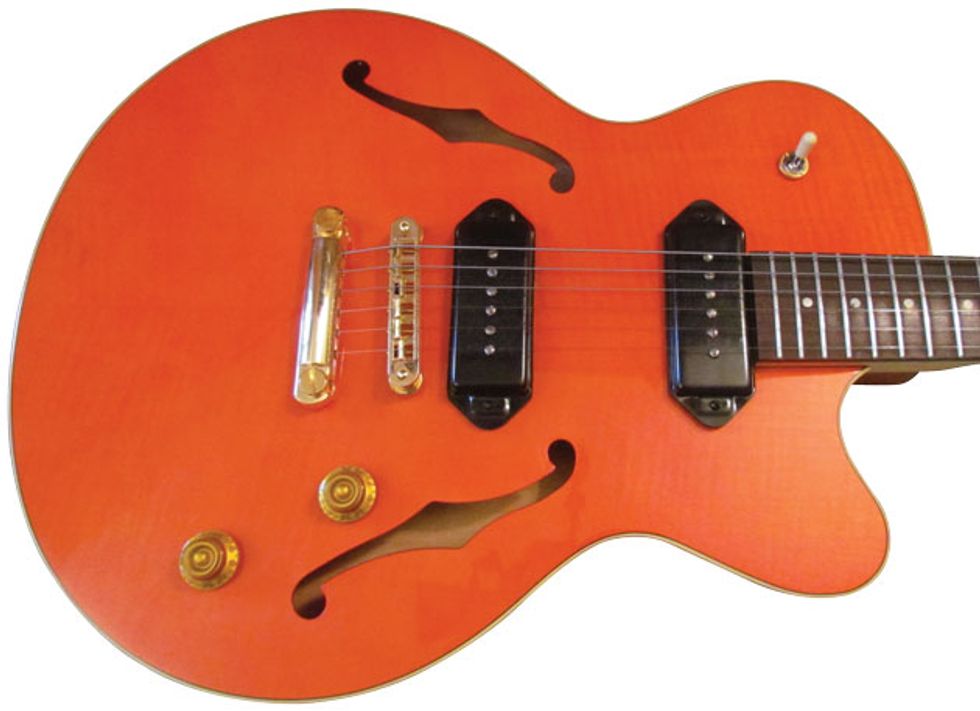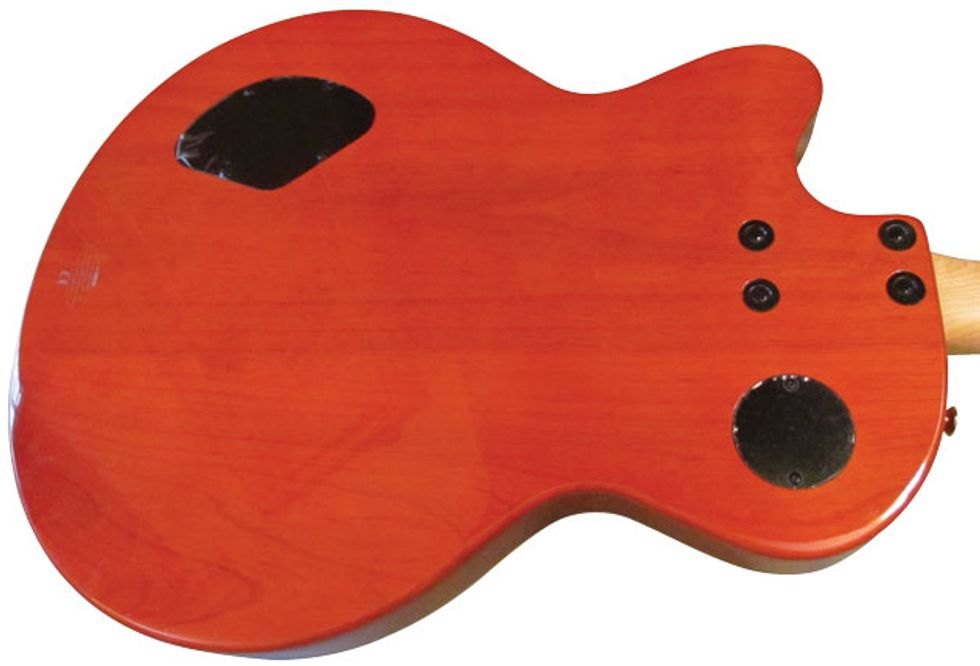Years ago, when I was first flirting with P-90 equipped guitars, I ran across this beauty on eBay. It was a Yamaha AEX-502 semi-hollowbody with two P-90 pickups. I’ve never owned many Yamahas, but this one really spoke to me with its cool orange color, rounded cutaway, gold hardware, and two F-holes. A real looker, the guitar reminded me of the old ’50s Guild Bluesbirds I’d run across at guitar shows. I bookmarked the auction and kept an eye on it while I did some research.
Bottom Feeder Tip #1163: It’s always important to do careful research before buying a new or used guitar. You need to know a guitar’s worth before bidding on it, and it’s smart to read other players’ reviews. I go to Sweetwater and similar sites to hear what real players on the front lines have to say. When I researched it, I learned these were made in the late 1990s. I also uncovered that a lot of blues guys would buy these and replace the weak, thin sounding P-90s with Gibsons and then have a very respectable blues monster for just a fraction of the price of a Gibson Les Paul. I was intrigued. Up until this point I’d never heard a pair of P-90s I couldn’t live with, so I decided to go for it. I ended up winning the auction by sniping at the last minute for $242 plus $20 shipping.
These Seymour Duncan Antiquity Dog Ear P-90 pickups replaced the originals, which sounded bright and thin.
When it arrived, the guitar looked gorgeous and played well. However, when I plugged it into an amp I was a bit underwhelmed. The stock pickups were a little too bright and weenie sounding for my tastes. But then I remembered I’d acquired a pair of Seymour Duncan P-90 Antiquities a while back that I was saving for just the right guitar. This was that guitar. I swapped out the pickups and was treated to some great blues tones.
This back shot reveals a sturdy four-bolt neck junction and easy-access panels for reaching the pickup selector
and tone and volume pots.
Bottom Feeder Tip #285: Sometimes it’s easier to simply swap out original pickups for some that you trust. It’s a good idea to keep some extra pickups at home for just such an occasion, but always keep the original ones in the guitar case in the event that you sell the guitar later and need to put them back in. I never seem to go wrong with Seymours. Listen to my sound sample and you can hear their midrange growl and high-end sweetness.
So is it still a keeper? Yeah, for now. I really dig the way it plays and sounds. The resale value isn’t much more than what I paid for mine 16 years ago. If I ever go to sell, I’ll probably swap out the Seymours and put the originals back in.
















![Rig Rundown: Russian Circles’ Mike Sullivan [2025]](https://www.premierguitar.com/media-library/youtube.jpg?id=62303631&width=1245&height=700&quality=70&coordinates=0%2C0%2C0%2C0)









